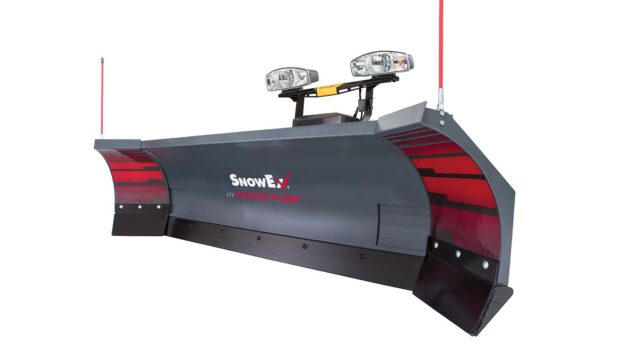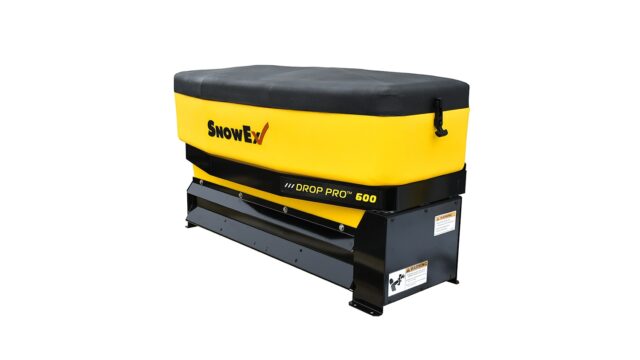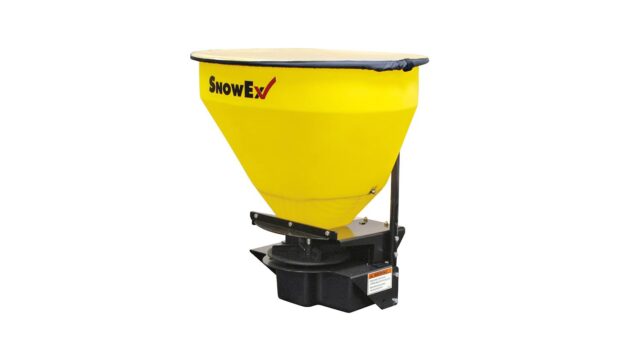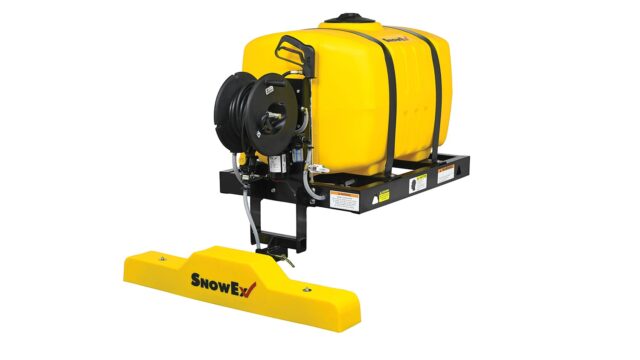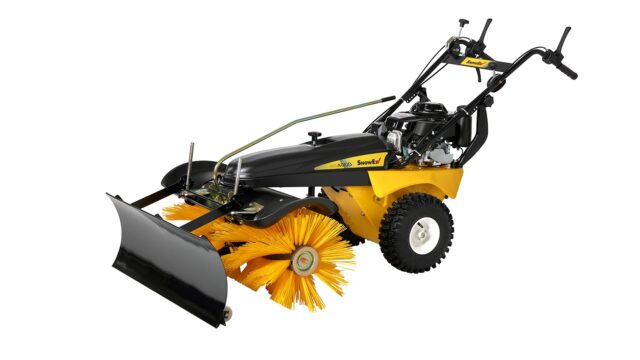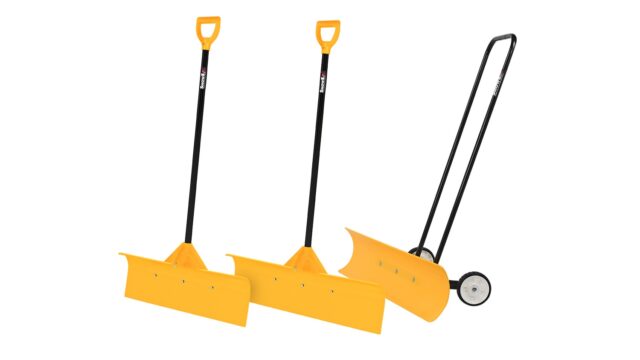Terms Every Snowfighter Needs to Know
Created March 30, 2020

By Pam Buckley, Sustainability Manager, Douglas Dynamics
Abrasive: A solid material placed on a slippery surface to temporarily improve traction for walking and driving. Abrasives may consist of natural materials such as sand, gravel, and chips; or manufactured materials.
Anti-Icing: A proactive strategy most commonly executed in advance of a storm consisting of a light application of a liquid or granular deicer to bare pavement to inhibit a strong bond from forming between frost/snow/ice and the surface. The Best Management Practice utilizes a direct liquid application (DLA). During or post storm initial/re-applications can also be employed if conditions warrant.
Best Management Practice (BMP): A technique or methodology scientifically proven or practically demonstrated to be the optimal approach under given circumstances to produce a desired result.
Bond: A strong connection that forms between compacted snow, ice, and the pavement, making removal by plowing difficult. The application of a freeze point depressant to the ice surface helps break this bond (see deicing) while a proactive approach (see anti-icing) is used to prevent the bond.
Brine: A solution of water and salt. The most commonly used brines for road use include sodium, calcium and magnesium chlorides.
CaCl2 (Calcium Chloride): An exothermic, hygroscopic deicer that occurs naturally as a liquid and can be made into a solid. It is the most versatile and commonly used material at lower temperatures.
Cycle Time: Refers to the length of time between the execution of one snow and ice control strategy and the next on a given surface during an event. This is a critical factor in determining deicer application decisions impacted by dilution and potential refreeze.
Deicer: A chemical used to depress the freeze point of water. These come in liquid and solid/granular, chloride and non-chloride forms and can be used for both anti-icing and deicing purposes.
Deicing: A reactive snow and ice control strategy of applying a deicer on top of compacted snow or ice during or after a storm to break an ice/pavement bond that has already formed. It is generally accepted that the Best Management Practice for deicing is to pre-wet solid deicers with liquid deicers during application.
Dew: Moisture that forms on a surface when water vapor in the air condenses.
Dew Point: The temperature at which water vapor in the air condenses and forms water droplets.
Direct Liquid Application (DLA): The process of applying liquid deicers directly to the surface. This is most commonly anti-icing pre-treatment, but can also be utilized under certain conditions as a post-treatment, during or after a storm, in place of spreading granular deicers.
Effective Temperature: The lowest temperature at which a deicer is cost effective to use for practical purposes, or at which the cost is justified by the results. In the industry there is a general consensus on the effective temperatures of common deicers, nevertheless these are subjective and therefore can vary according to circumstance.
Endothermic: A deicer that absorbs heat when going into solution (deicer chemical) that requires heat to change from a solid to a liquid. The heat is taken from its surroundings, lowering the temperature slightly in its vicinity. Sodium chloride (road salt) is an example of an endothermic freeze point depressant.
Exothermic: A deicer that gives off heat when going into solution. Magnesium and calcium chlorides are exothermic deicers.
Enhanced Deicers: Proprietary products chemically engineered/blended to improve performance characteristics such as melting rate, melting capacity, corrosion and environmental impact.
Eutectic Point: The lowest temperature at which a deicer solution remains in liquid form. This is represented by the lowest point of the “V” in a phase diagram and commonly referred to as the freeze point of the deicer.
Freeze Point: The temperature at which a deicer liquid starts to freeze or change to a solid (ice).
Freeze Point Depressant: For snow and ice control, a material (e.g. deicer chemical) that lowers the freeze point of water. Used for snow and ice control to minimize, prevent or break the ice/pavement bond that forms on driving and walking surfaces.
Friction / Friction Coefficient: The ratio between the force necessary to move one surface horizontally over another and the pressure between the two surfaces. For deicer products it is important to know their effect on friction values on paved surfaces, because as friction values go down, stopping distances go up.
Frost: Ice crystals that form when dew condenses on a surface that is below freezing.
Ground Speed Controls: Electronic/GPS technology that automatically adjusts material output according to the ground speed of the vehicle being used to maintain a consistent rate of application. The use of such technology is a Best Management Practice for all material application, but is especially important for liquids.
Hygroscopic: Relative to deicers, hygroscopic means that they absorb or attract moisture from the air. Calcium and Magnesium Chlorides are hygroscopic, which is why they are best suited to cold/dry types of events. The use of hygroscopic liquids is cautioned with events containing high moisture content as slippery conditions could result from improper application.
Infrared Thermometer (IRT): A device used to quickly measure pavement temperatures and trends. Comes in both hand-held and vehicle-mounted (with digital readout in the cab) versions.
MgCl2 (Magnesium Chloride): An exothermic, hygroscopic deicer that occurs naturally in a liquid form and can be made into a solid with effective performance capabilities below 0° F.
NaCl (Sodium Chloride): Rock salt is an endothermic deicer and the most widely used for winter services. It occurs naturally as a solid and can be made into a liquid. Applied at a 23.3% concentration, salt brine is reported by The Salt Institute to be the most effective choice for anti-icing above 15° F.
Pavement Surface Temperature: The temperature at the surface of the pavement being treated, be it concrete, asphalt or pavers. Sometimes covered with snow or ice, the pavement surface temperature is the most important data point in determining deicer material strategy and application rate.
Phase: The state of a material (i.e. solid, liquid, or gas).
Phase Change: A transition from one state to another. For example, a deicer solid changing from a solid to a liquid after being applied to ice or solid sodium chloride forming brine.
Phase Diagram: A graphic representation or diagram that correlates the freeze point of a deicer solution to the concentration of the solution as represented on the phase curve.
Post-Treatment: A strategy employed during or after a storm. These can either be anti-icing or deicing in nature depending on whether or not snow and ice has formed a strong bond to the pavement, and can employ solid or liquid deicers, or a combination thereof.
Pre-Treatment: A strategy employed in advance of a storm. For example, an application of an exothermic or enhanced liquid deicer to a stockpile to increase material performance or an anti-icing application to bare pavement to inhibit the formation of a snow/ice-to-pavement bond.
Pre-Wetting: A technique whereby a liquid deicer is applied to a granular deicer or sand in the auger, chute or at the spinner as it is applied to the road. Pre-wetting is a Best Management Practice that jumpstarts the brining process of granular deicers, reducing waste and accelerating performance results.
Reaction Time: The time required for a solid deicer to enter into solution and begin melting frost, snow or ice.
Refreeze: The freezing of a deicer either as result of its dilution beyond a point it will work at existing temperatures or a result of pavement temperatures dropping below the freeze point of the existing concentration.
Residual Chemical: Dry freeze point depressant remaining on the pavement surface after all the moisture has evaporated. This residual will dissolve when new moisture is added either as dew, rain or snow. This residual provides some anti-icing capabilities.
Road Salt: A common term used for salts (sodium chloride) used for winter snow and ice control. This term may also apply to other salt-based products such as calcium chloride, magnesium chloride and potassium chloride.
Saddle Tanks: The liquid storage components of a salt spreader/pre-wet system designed to hold the liquid deicer used to spray granular materials before they are applied to the road.
Salt Management Plan: A detailed plan of how salt users propose to improve the management of their use of road salt through the introduction of Best Management Practices. These plans take into consideration all activities resulting in the release of road salts into the environment, including storage, application of salts on paved surfaces, the use of liquids and solid deicers, and the disposal of snow containing road salts.
Salts: Chloride-based freeze point depressants including sodium chloride, calcium chloride, magnesium chloride, and potassium chloride.
Salt Vulnerable Areas: Areas of the environment adjacent to a service area that may be particularly sensitive to road salts.
Sand/Salt Mixtures: Sand or grit that has been mixed with chemical deicer to prevent the sand from freezing while it is being stored. A minimum mix of 3-5 percent salt by volume is usually sufficient to prevent freezing when using a solid deicer chemical for the purpose. Liquids are mixed with sand or grit at rates expressed in gallons per cubic yard. Rates will vary based on the specifications of the grit, and the liquid deicer being utilized.
Scope of Work: A description of the agreed upon deliverables relative to services to be rendered on a given property. It clearly defines the types of services to be performed, conditions under which they must start, desired conditions during the event and how long after the end of an event the deliverables must be achieved. All of this is typically included in the Site Management Plan and contract. Sometimes referred to as Level of Service — which describes how a property should look during and after the storm.
Secondary Containment: Measures taken to prevent the release of stored liquids in the event of a failure of the primary containment tank. This can be either a secondary wall around the primary tank (i.e. double walled containers) or an impermeable floor and walls constructed around the storage tank(s) with enough volume to catch and hold the material if spilled or leaked.
Sustainable: Refers to a practice which can be maintained indefinitely resulting in a positive impact on the quality of the environment.
Download a PDF version of the article here.









